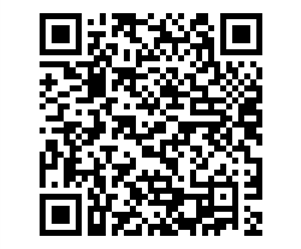Physiotherapy – Advice and Exercises Following an Obstetric Anal Sphincter Injury (OASI) – 3rd / 4th Degree Tear
Advice and Exercises Following an Obstetric Anal Sphincter Injury (OASI) – 3rd / 4th Degree Tear
The information in this leaflet is to help to make you more comfortable and recover the strength in your pelvic floor muscles following your delivery. A 3rd or 4th degree tear affects the pelvic floor and the ring of muscle around the back passage (the anal sphincter). It can happen during an unassisted or instrumental delivery – especially forceps.
Pain Relief
- Use medication as advised by your midwife or doctor. This will help to keep you mobile, which helps the healing process.
- You could also try using an ice-pack – this will help to reduce swelling, and disperse bruising. When you are at home, you can make a simple ice pack by soaking a panty liner with water and placing this in the freezer. These are good to use for up to 10 minutes – in side lying only, use for 5mins then remove for a few minutes before replacing for a further 5mins.
Caution: ice can burn so do not leave it in place for more than 5 minutes. Do not sit directly on ice.
- Your stitches should dissolve within 2 weeks of delivery but may last longer. This is not usually problematic unless it is very painful, there is a change in vaginal discharge or you are feeling unwell. Please ensure you get your midwife to check your perineum before discharge at day 10 if you have any concerns.
Going to the toilet
You may feel worried about emptying your bowels for the first time.
Using a wad of toilet paper/maternity pad support the area just in front of your back passage while you gently bear down with a series of short pushes (rather than straining).
You will be given medicine to keep your stools soft to make them easier to pass. Aim to keep stool ‘soft but formed – like butter’, but not loose. Make sure you are drinking enough, as this will help you avoid becoming constipated. This is especially important if you are breast-feeding.
Your Bladder
You may have a catheter for a short time. When this is removed, it sometimes takes a little while for the normal sensations in your bladder to return. It is important that you don’t allow your bladder to overfill, so empty it regularly (every couple of hours) until the normal feeling returns. Take your time to make sure your bladder empties properly.
Also, as the area is healing ensure you keep it clean, washing carefully with warm water only and dry it thoroughly to help prevent infection. Do not use any products – creams/gels/wipes on the healing area – they can cause infection and irritation to new skin. Medihoney or equivalent may be recommended.
Tell your midwife if you are unable to pass urine within 6 hours of catheter removal.
Pelvic Floor Exercises
There is a small risk, because of the area of your tear, that you may have problems with control of your bladder or bowels in the next few weeks, or later in life as you approach the menopause.
It is very important that you exercise your pelvic floor muscles regularly to help them recover their strength.
The pelvic floor is a group of muscles like a hammock at the base of the pelvis. It has three openings – the urethra (the bladder outlet), the vagina (birth canal) and the anus (back passage). The muscle group supports the pelvic organs (bladder, bowel and womb) and helps control the bladder and bowels, as well as improving sexual satisfaction for both you and your partner.
To start
Sit comfortably or lie on your side.
Imagine that you are trying to stop yourself passing urine and ‘wind’, draw the area upwards and forwards from bowel to bladder – then let go.
Start this ‘squeezing and lifting’ movement gently at first. ‘Squeeze and lift’ and try to hold for a few seconds (breathe normally –don’t hold your breath and ensure your buttocks and thighs are relaxed!) This is a ‘slow hold’.
Rest for a moment, and then repeat 4 times if you can.
Now try squeezing the pelvic floor muscles quickly 5 times, with a little rest between each squeeze. This exercise helps your muscles react quickly when you cough or sneeze.
How often do you need to exercise?
- Try 5 ‘slow hold’ squeezes, followed by 5 ‘quick’ squeezes at least 4 times a day. Ensure you relax the muscles after each squeeze.
- As your muscles get stronger, try holding the ‘slow’ holds for longer.
- The hardest part is remembering to do your pelvic floor exercises – a good time to do them is every time you feed your baby.
- You will need to do 4 sets of exercises daily, for 6 months. After that, one set a day will maintain the strength of your pelvic floor muscles. Aim for 8-10 slow holds of 10 seconds and 10 fast contractions by 6 months post-natal.
- Don’t stop and start your flow of urine – this can interfere with normal bladder function.
- Gentle pelvic floor exercises can also help your tear to heal by reducing the swelling in the area.
- Use the NHS approved ‘Squeezy’ app available on all smart phones and mobile devices to help remind you to complete your pelvic floor exercises.
- If you are concerned about your healing, bladder or bowel control, please telephone the physiotherapy department to speak to the Pelvic Health Physiotherapist – 01908 995432.
What happens next?
- Around 6 weeks after delivery you will be seen by the Pelvic Health specialist physiotherapist in the Perineal Clinic in Outpatients. She will check that your pelvic floor muscle strength is returning to normal and ensure that any problems with bladder or bowel control or scar healing are dealt with quickly and appropriately – the consultant is available if required.
- If you do not receive this appointment, please ask your G.P or health visitor to refer you.
- It is important that you are followed up to prevent any long-term problems with your bladder or bowels.
- Please also refer to the Perineal Care booklet provided as well as the RCOG information on OASI provided
- For further advice and safe exercises, including audio link – please refer to:
- Pelvic Floor Muscles | POGP (thepogp.co.uk)
- Fit for the Future | POGP (thepogp.co.uk)
If you would like further help please refer to our online resources on our website: www.bedfordshirehospitals.nhs.uk/our-services/maternity-2/pelvic-health/
Please note that although Bedfordshire Hospitals NHS Foundation Trust may include links to external websites, the Trust is not responsible for the accuracy.
Please scan these QR codes for further advice and resources:

QR Code leads to Pelvic Health section of Trust website

QR code leads to Pelvic Obstetric & Gynaecological Physiotherapy (POGP) website and patient leaflets
Contact us
For the Luton team based at Chaul End, call 01582 329 638
For the Bedford team, call 01234 792673
We ask for information about you so that you can receive proper care and treatment. This information remains confidential and is stored securely by the Trust in accordance with the provisions of the Data Protection Act 2018/GDPR. Further guidance can be found within our privacy notice found on our Trust website:
